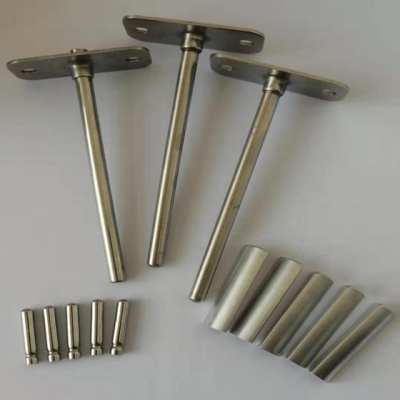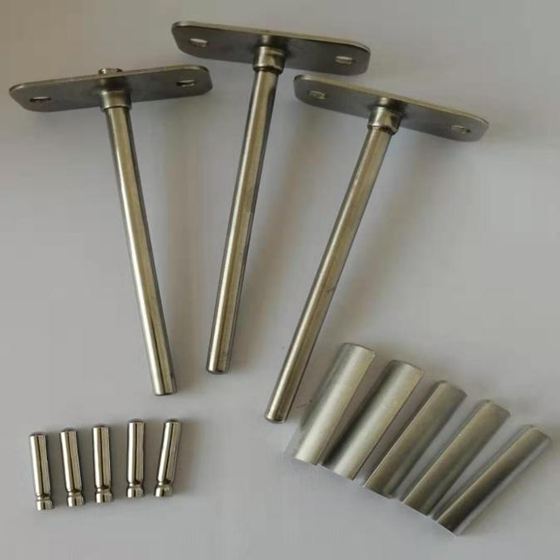When selecting components for precision environments—think aerospace, pharmaceutical, food processing, or semiconductor production—the choice of temperature sensor housing plays a bigger role than many realize. The housing isn’t simply a shell. It’s a barrier, a stabilizer, and a protector that directly influences sensor accuracy, durability, and overall system performance.
1. Protecting Sensor Accuracy from Environmental Harshness
High-precision industries often operate in extreme temperatures, humidity, corrosive chemicals, and mechanical stress. A well-designed temperature sensor housing shields delicate sensor elements from these conditions. Without this protection, condensation, dust, or corrosives can warp readings by as much as several degrees, resulting in costly process errors.
Premium housing materials—such as 316 stainless steel, aluminum alloy, or high-grade plastics—offer resistance to corrosion and thermal shock. Those finishing options like electropolishing or PTFE coating further enhance protection in aggressive environments.
2. Improving Response Time and Thermal Stability
In process control, split-second temperature changes matter. The housing material and thickness determine how quickly a sensor reaches thermal equilibrium. Too thick, and the housing adds latency. Too thin or poorly conductive, and readings fluctuate with ambient changes.
Engineered housings use optimized wall thickness and suitable metals to provide both mechanical protection and minimal response delay. For example, a stainless steel tube with 0.5 mm wall thickness or a tapered tip design enables fast thermal conduction while preserving robustness.
3. Ensuring Longevity in Critical Applications
Shutting down production for sensor replacement is costly. Sensor housing extends lifecycle through durability. It resists thermal cycling, prevents moisture ingress using IP-rated seals, and dampens vibration using internal supports or O-rings.
Rigorous pressure and tensile testing—often specified in quality systems like ISO 9001—guarantee reliable performance. Longer lifecycle means less maintenance interruption and reduced total cost of ownership.
temperature sensor housing supplier
4. Supporting Industry-Specific Standards and Compliance
Medical, food, and aerospace sectors mandate industry-specific certifications. Sensor housing must meet standards like USDA 3A sanitary design, FDA food-grade materials, ATEX for explosive atmospheres, or aerospace-grade traceability.
Choosing a housing that carries the right certs not only protects safety and performance, but also simplifies audits and regulatory reporting.
5. Custom Design Flexibility for Unique Installations
In high-precision systems, installation constraints vary. Flow sensors may mount in tight pipe fittings; OEM systems require customized probe lengths or threaded connections. Here, tailored temperature sensor housing offers immense value.
Manufacturers like Horle can deliver custom designs with adjustable probe length, insertion depth, flange adaptors, or threaded BSP/NPT connectors. This flexibility ensures the sensor suits each control loop or machinery configuration precisely.
6. Seamless Integration with Data Systems and Accessories
Beyond housing material, design features like terminal blocks, quick-disconnect plugs, or integrated preamplifiers streamline installation. Models with built-in M12 connectors or IP-rated junction boxes simplify wiring and ensure secure signal transmission.
In industries where uptime and clarity matter—like pharmaceutical lines or cleanroom assembly—such integration reduces installation time and human error.
What Should Look for in Sensor Housing
|
Feature |
Why It Matters |
|
Material & Coating |
Corrosion resistance, thermal conductivity, and lifespan |
|
Thermal Response |
Faster readings help tighter process control |
|
Ingress Protection |
IP67, IP68 sealing prevents damage from moisture or dust |
|
Certifications |
Compliance with industry standards (e.g. 3A, FDA, ATEX) |
|
Customization Options |
Right probe length, thread type, adaptors for fit |
|
Connector & Wiring Options |
Quick-install support cuts downtime |
|
Manufacturer Support |
Design guidance, quality testing, and warranty |
Horle’s Strength in Temperature Sensor Housing Solutions
Horle specializes in manufacturing rugged and precision-engineered sensor housings in China, aiming to serve large-scale installations, OEM integrations, and demanding industrial environments.
Here’s how Horle supports high-precision buyers:
- Material Expertise: Use of 316L stainless steel alloys, high-precision extrusion, and coating options ensures corrosion resistance and thermal stability.
- Design Versatility: Standard or customized lengths, tapered or open tips, BSP/NPT threads, flanges, flared ends or sanitary tri-clamp fittings.
- IP-rated Sealing: IP65 to IP68 designs with high-quality O-rings or compression seals for moisture- and dust-proof protection.
- Compliance Focus: Custom units available with food-grade or explosion-proof ratings, along with factory documentation to back audits.
- Integrated Installation Ease: Choices of terminal block heads, M12 plugs, or pre-wired lead styles tailored to automation systems.
- Quality Assurance: Each housing undergoes leak testing, dimensional measurement, and thermal performance checks aligned with ISO standards.
Putting It Together: How Housing Impacts Your Outcome
When your system requires accurate readings within a tenth of a degree, poorly chosen sensor housing becomes a weak point. Moisture interference, slow thermal response, or corrosion-induced drift erode control and can lead to product waste, machine stoppage, or nonconformance.
On the other hand, thoughtfully engineered housing speeds response, enables more reliable control, reduces maintenance downtime, and supports compliance. For engineers sourcing temperature sensors for food lines, cleanrooms, or machinery control systems, the housing makes a measurable difference.
Conclusion
Temperature sensor housing isn’t just a protective shell—it’s an integral part of system accuracy, reliability, and compliance in high-precision industries. Choosing the right housing design and material pays dividends in faster response times, longer equipment service life, easier installation, and smoother audits.
At Horle, our mission is to deliver sensor housings that meet your exact application needs—with durable materials, custom configurations, and precise manufacturing. If you’re specifying sensor probes for aerospace, food processing, cleanroom automation, or OEM integration, we can tailor packages to minimize downtime and maximize precision.
Let us know what design, certification, or customization you need—and we’ll recommend or craft the best fit for your high-precision process.








